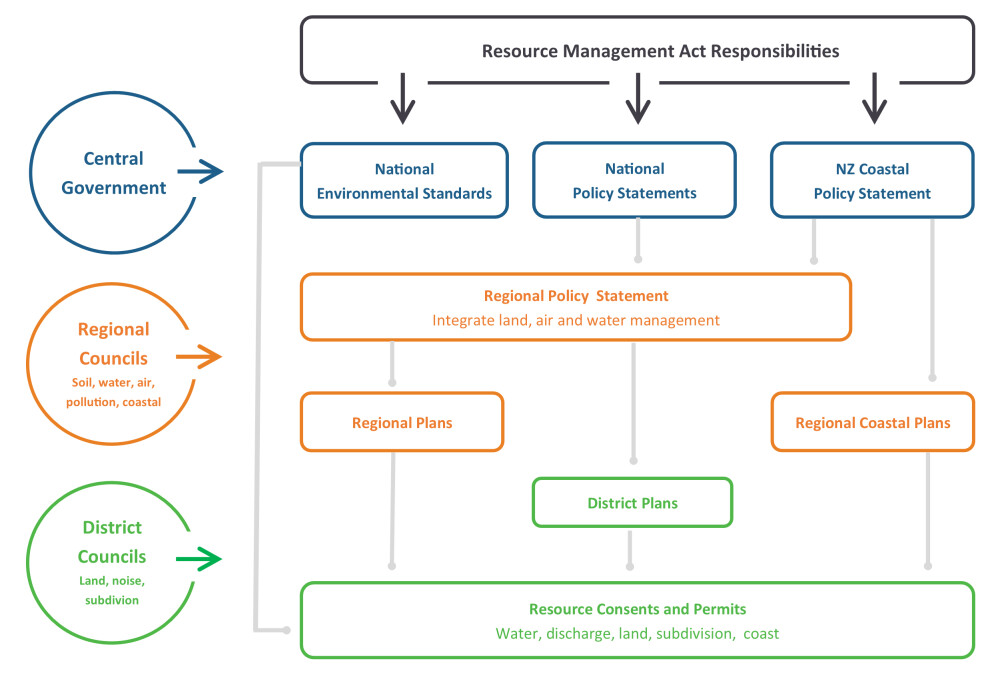New Zealand legislation
New Zealand's resource management system is designed to support development within environmental limits and is required to give effect to the principles of Te Tiriti o Waitangi - Treaty of Waitangi
The Resource Management Act 1991 (RMA) is currently the main law governing how people interact with natural resources.
The RMA is based on the principle of sustainable management, recognises the Treaty of Waitangi in decision making, and was designed to achieve a more coordinated, streamlined, and comprehensive approach to environmental management. As well as managing air, soil, fresh water and coastal marine areas, the RMA regulates land use.
While the RMA provides an overarching guide on what’s best for our environment, with national direction on significant issues, it allows communities to make decisions on how their own environment is managed through regional and district resource management plans.
National Environmental Standards (NES)
Under the RMA NES have been established (regulations issued under sections 43 and 44 of the Resource Management Act ) to provide technical standards, methods or other requirements for environmental matters and apply nationally.
Under the RMA who is responsible for National Environmental Standards (NES), National Policy Statements (NPS), Regional Policy Statements, Regional Plans, City/District Plans, and Resource Consents/Permits are shown in Figure 1.
There are NES’s that apply to the natural environment, one being the National Environmental Standards for Commercial Forestry (NES-CF). The NES-CF has permitted activity rules, and these can be to do with: afforestation, earthworks, river crossings, and harvesting. If the activity complies with the permitted activity rule a notice needs to be sent to the council, if not complying a resource consent is required.
Another example for an NES is the National Environmental Standard for Assessing and Managing Contaminants in Soil to Protect Human Health (NES-CS). The NES-CS is a nationally consistent set of planning controls and soil contaminant values. It ensures that land affected by contaminants in soil is appropriately identified and assessed before it is developed - and if necessary the land is remediated or the contaminants contained to make the land safe for human use.
One of the NPS’s is the National Policy Statement for Highly Productive Land (NPS-HPL) which came into effect on 17 October 2022. The NPS-HPL will enhance protection of highly productive land from inappropriate subdivision, use, and development. Local Councils (Regional Councils and Territorial Authorities) have a three-year transition phase to fully identify, map, and manage highly productive land.
Land Use Capability (LUC) data are an important base for both the NES-CF and the NPS-HPL in determining erosion susceptibility for commercial forestry and what/where highly productive land is.
